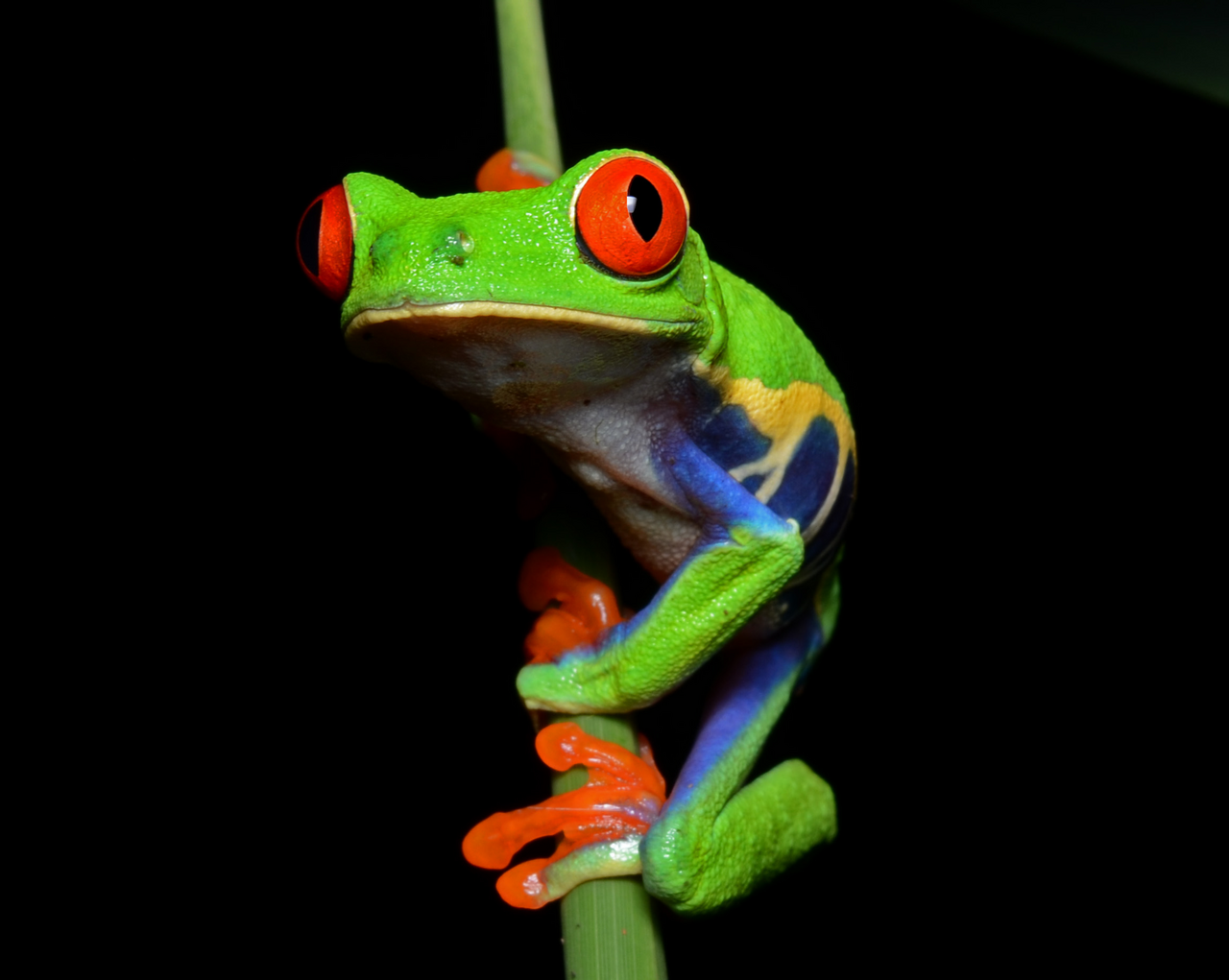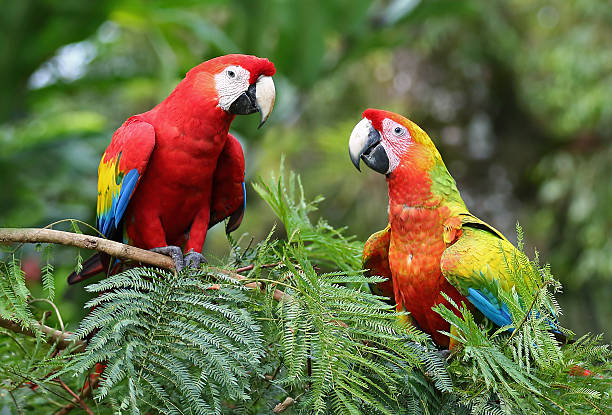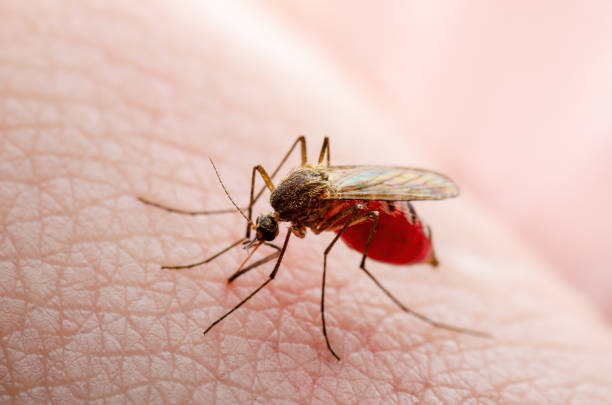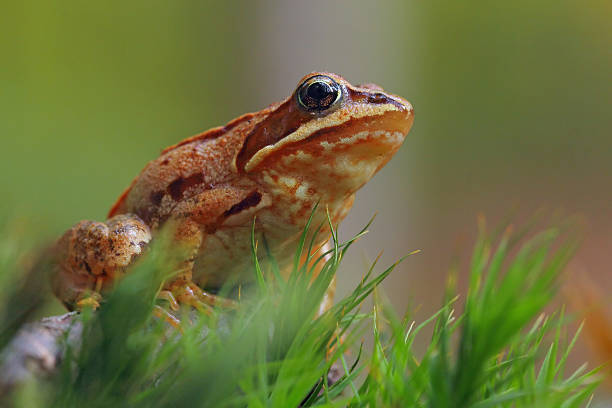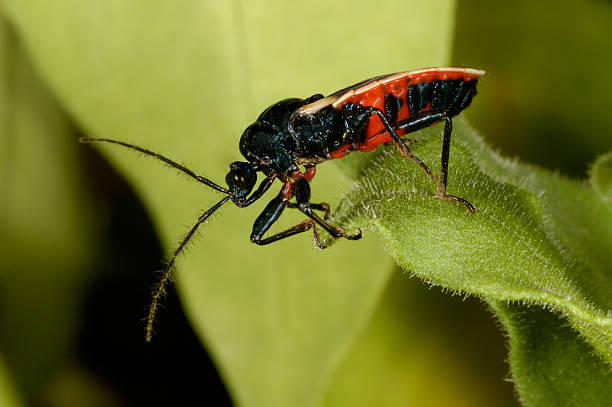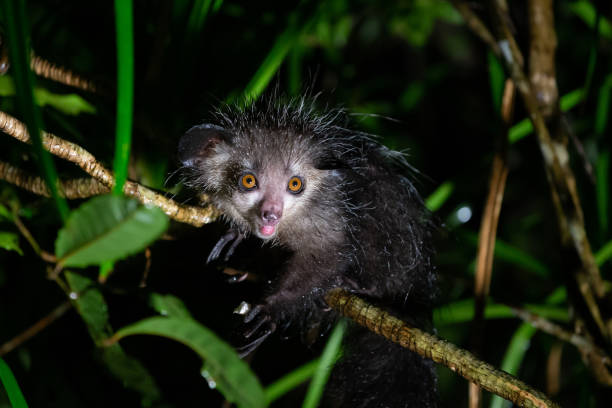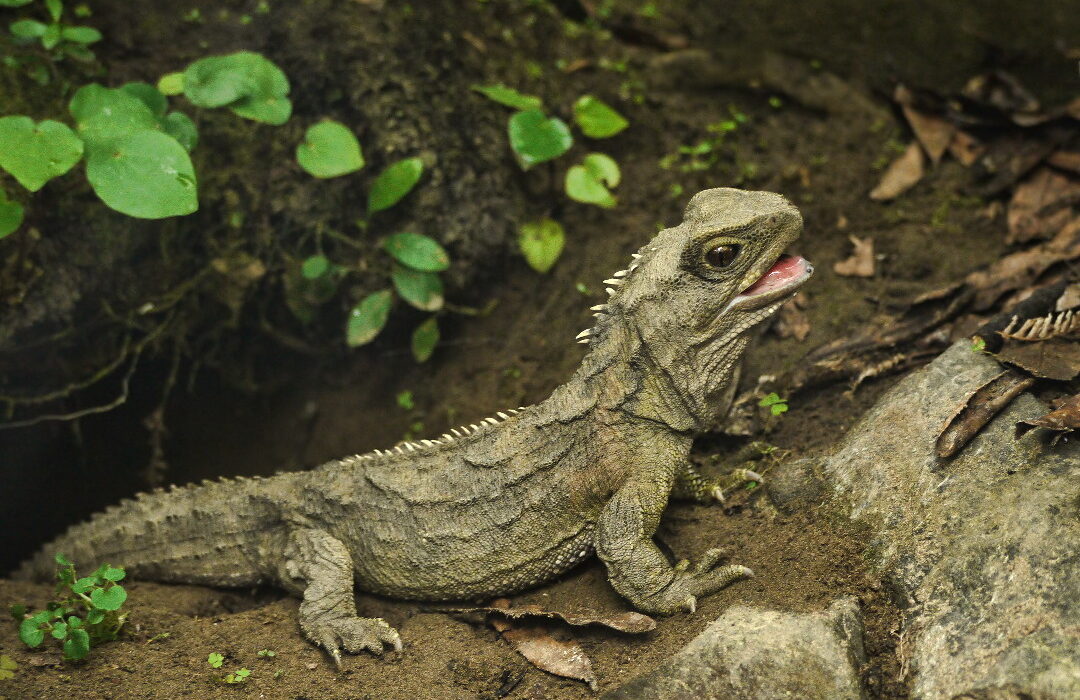When we think of glowing creatures, we imagine fireflies drifting through warm summer nights or jellyfish pulsing in the abyssal dark. But deep within the rainforests, swamps, and mountain streams of our planet, a quieter and even more mysterious light flickers—one that comes from amphibians.
Amphibians, those extraordinary beings that bridge the watery and the terrestrial, are not just survivors of evolution’s grand experiment. Some among them carry within their skin, bones, or eyes a radiant magic: the power to glow. Whether through bioluminescence, where light is produced chemically within the body, or biofluorescence, where they absorb one wavelength of light and emit another, these animals illuminate an unseen world that thrives after sunset.
This hidden luminescence tells a story of survival, attraction, and communication—an evolutionary language written in light. Let’s journey through the shadowy wetlands and ancient forests to meet ten amphibians that glow in the dark, each with its own secret reason for shining.
1. Polka-Dot Tree Frog – The Neon Gem of the Rainforest
Discovered in Argentina in 2017, the Polka-Dot Tree Frog (Boana punctata) astonished scientists by being the first known amphibian to display natural fluorescence. Under ultraviolet (UV) light, this small green frog glows a bright, ethereal blue-green, transforming into a living emerald that seems sculpted from moonlight.
Unlike bioluminescence, which generates light through chemical reactions, the Polka-Dot Tree Frog’s glow comes from fluorescent molecules in its lymph and skin glands. When UV light—like that found at dusk or during full moon nights—hits these molecules, they absorb and re-emit energy as visible light.
This fluorescence likely helps frogs recognize each other in low-light conditions or communicate during twilight courtship. In the dense, shadowy rainforests of South America, their glowing bodies might serve as secret signals, invisible to predators but radiant to potential mates.
The discovery of Boana punctata’s glow changed how scientists view amphibians. It revealed that frogs might use light not only as a tool of survival but as a form of beauty—a language written in photons.
2. South American Tree Frog (Boana atlantica) – The Fluorescent Cousin
Closely related to the Polka-Dot Tree Frog, the Boana atlantica species found in Brazil also glows under UV light. Its fluorescence is subtler, with hues of pale green and turquoise rippling across its body like reflected water.
What makes this species fascinating is how variable its fluorescence can be. Some individuals shine brightly, while others show only faint hints of luminescence. Scientists suspect that diet, environmental conditions, and even hormonal states might influence how vividly these frogs glow.
This natural fluorescence may play roles in species recognition, camouflage, or mate attraction, though its exact purpose remains a mystery. What’s certain is that Boana atlantica, like its cousin, carries within it a key to understanding how light evolved as a hidden dimension in amphibian life.
3. Green Tree Frog (Hyla cinerea) – America’s Glowing Songster
The American Green Tree Frog (Hyla cinerea) is a beloved sight in the southeastern United States, known for its musical trills and lime-green body. But beneath its charming surface lies a surprising secret: it’s also biofluorescent.
When exposed to ultraviolet or blue light, these frogs glow with a delicate neon greenish hue. The fluorescence comes from pigments and proteins in their skin that interact with natural moonlight and UV light scattered through their swampy habitats.
While subtle to the human eye, this glow may help frogs recognize each other during their nightly chorus. In the dark marshlands, where visual cues are limited, a faint glow can be the difference between finding a mate or remaining unseen.
The Green Tree Frog’s luminescence reminds us that even the most familiar creatures still carry hidden wonders, waiting for science—and imagination—to reveal them.
4. Pumpkin Toadlet (Brachycephalus ephippium) – The Tiny Fluorescent Jewel
In the cloud forests of Brazil’s Atlantic coast lives one of the smallest frogs on Earth: the Pumpkin Toadlet. Barely the size of a fingernail, this orange amphibian glows with an eerie blue-green fluorescence when exposed to ultraviolet light.
What makes this tiny creature even more extraordinary is that its bones—especially the skull and vertebrae—emit fluorescence through its skin. When viewed under UV light, its entire head seems to shimmer like a gemstone.
Scientists believe this fluorescence might serve as a warning signal, advertising its toxicity to potential predators. The Pumpkin Toadlet secretes potent alkaloid toxins from its skin, making it dangerous to eat. Its neon glow, then, could be a visual cue that screams, “Don’t touch me!”
Even more curiously, these frogs are deaf to their own calls, relying on visual and possibly fluorescent cues for communication instead of sound. In this way, the Pumpkin Toadlet uses light as both language and armor—a remarkable adaptation for a creature so small and silent.
5. Lemur Leaf Frog (Agalychnis lemur) – The Nocturnal Glow of the Cloud Forests
The Lemur Leaf Frog, native to the cloud forests of Costa Rica and Panama, is one of the world’s most striking amphibians. By day, it is a soft green that blends perfectly with leaves; by night, its body transforms under UV light, glowing a surreal lime-green to blue fluorescence.
This glow is caused by a combination of biliverdin pigments and structural proteins that absorb and re-emit light. The fluorescence likely enhances camouflage at night, helping the frog merge seamlessly with moonlit foliage.
Lemur Leaf Frogs are critically endangered, their populations dwindling due to habitat loss and fungal disease. Yet in their glowing bodies, we glimpse resilience—an evolutionary whisper of light that has endured for millions of years.
To see one glow is to witness nature’s quiet defiance, a reminder that even in decline, beauty can still shine.
6. Cranwell’s Horned Frog (Ceratophrys cranwelli) – The Bioluminescent Hunter
Unlike most glowing amphibians, Cranwell’s Horned Frog, native to Argentina and Paraguay, displays faint bioluminescence—meaning it produces its own light rather than merely reflecting it. Though dim and rarely visible to the naked eye, this self-generated glow has fascinated herpetologists for decades.
The frog’s luminous quality is thought to arise from specialized skin compounds that emit low-level light in reaction to chemical changes in its mucus or blood. While the purpose of this glow is not fully understood, some researchers speculate it may aid in attracting prey in low-light environments.
Cranwell’s Horned Frog, also known as the “Pacman Frog” for its enormous mouth, is an ambush predator. Concealed in mud or leaf litter, its faint glow might mimic moonlight reflecting on damp soil—luring insects closer until it strikes.
Its luminescence may be faint, but its message is powerful: even in darkness, life finds a way to light its own path.
7. Amazon Milk Frog (Trachycephalus resinifictrix) – The Shimmering Giant
High in the Amazon rainforest canopy lives the Amazon Milk Frog, a large, blue-gray amphibian named for the milky secretion it produces to deter predators. Though not known to produce its own light, researchers recently discovered that it fluoresces vividly under UV light, emitting a bright blue-green glow.
This fluorescence likely serves as camouflage among the reflective leaves and humid mist of its arboreal home. When moonlight filters through the trees, the Milk Frog’s glow may help break up its outline, making it invisible to nocturnal hunters like snakes and bats.
Equally fascinating is that their fluorescence intensity changes with hydration and age. Younger frogs glow more intensely, suggesting a potential role in communication or signaling maturity.
Seeing an Amazon Milk Frog shimmer in the jungle night feels like encountering a piece of starlight come to life—a living echo of the rainforest’s luminous soul.
8. Tiger Salamander (Ambystoma tigrinum) – The Glowing Guardian of the Wetlands
Few would expect the humble Tiger Salamander, common across North America, to be part of this glowing pantheon. Yet under ultraviolet light, these sturdy amphibians shine with a subtle, ghostly green fluorescence along their skin and bones.
This glow arises from fluorophores in the dermal and skeletal tissues, which absorb UV and re-emit visible light. While it might seem accidental, this fluorescence could have ecological meaning—helping salamanders recognize each other under moonlight or navigate murky waters.
Even their larval forms (axolotls) display similar fluorescence, which scientists often exploit in biological research. The Tiger Salamander’s glow, then, bridges science and wonder: a natural phenomenon that reveals both evolutionary adaptation and scientific utility.
In the quiet wetlands where they dwell, their faint luminescence adds a touch of mystery to the night—a reminder that magic often hides beneath the surface of ordinary life.
9. Axolotl (Ambystoma mexicanum) – The Luminous Eternal Child
Among the most beloved amphibians in the world, the Axolotl is a creature of perpetual youth. Unlike most salamanders, it never undergoes full metamorphosis, remaining aquatic and gilled throughout its life. But what truly sets it apart is its remarkable fluorescence—both natural and enhanced.
Wild axolotls show faint green fluorescence under UV light, particularly around their gills and skin. This natural glow comes from fluorescent compounds in their tissues. However, scientists have also introduced bioluminescent genes into axolotls for research, creating glowing specimens that aid in the study of regeneration and cell biology.
The Axolotl’s ability to regenerate limbs, spinal cords, and even parts of its brain has made it a symbol of healing and rebirth. Its glow, natural or engineered, serves as a living metaphor: light shining from within, even in the depths of the dark.
In Aztec legend, the axolotl was the god Xolotl, who transformed into a salamander to escape sacrifice. Perhaps its inner light is the echo of that divine spark, still flickering centuries later.
10. Chilean Four-Eyed Frog (Pleurodema thaul) – The Fluorescent Enigma
Found across Chile and Argentina, the Chilean Four-Eyed Frog is named for the two large poison glands on its back that resemble extra eyes. Recent studies have revealed that this species also displays a faint green fluorescence under UV light, especially around its “false eyes” and limbs.
Scientists believe this glow may serve as a defensive mechanism. The fluorescent patches could enhance the illusion of large eyes, intimidating predators at night. Alternatively, they might function as a mating signal—a secret glow that only other frogs can truly perceive.
Its glow is subtle, barely perceptible to human eyes, but under the right light, it’s as though the frog wears a ghostly aura. This delicate luminescence transforms an otherwise ordinary amphibian into something almost mythic—a creature of light and shadow, survival and illusion.
The Science of Amphibian Glow
The ability of amphibians to glow or fluoresce challenges our understanding of evolution and perception. Most of these animals do not see light the same way humans do; many can detect ultraviolet wavelengths, giving them access to a hidden world invisible to us.
Their luminescence is not just decoration—it’s communication, camouflage, or warning. Biochemically, fluorescence often arises from biliverdin (a bile pigment), pteridines, and fluorescent proteins, all of which interact with UV or blue light to produce visible color.
Bioluminescence, on the other hand, is rarer in amphibians. It involves chemical reactions between luciferin, oxygen, and the enzyme luciferase, producing visible light. Though only faintly present in species like Cranwell’s Horned Frog, this trait hints at ancient evolutionary pathways once shared with marine organisms.
A Hidden Symphony of Light
When night falls in a rainforest or wetland, human eyes see only darkness and shadow. But to amphibians, the world glows with a secret radiance—a living spectrum of signals, warnings, and whispers written in light.
Each glowing frog and salamander carries within it a message from evolution: that survival is not only about strength or stealth, but also about connection. Light becomes a bridge—a way to see and be seen, to love, to warn, to exist in the endless twilight of nature’s design.
The Wonder Beyond the Glow
In an age when so many species teeter on the brink of extinction, the glowing amphibians of our world remind us of nature’s resilience and creativity. They are living testaments to the poetry of evolution, where chemistry and beauty intertwine.
When we shine a UV lamp over a leaf or a puddle and see a frog shimmer into view, we are not just witnessing fluorescence—we are glimpsing a deeper truth. The universe is alive with light, even in its smallest and quietest corners.
So the next time you find yourself by a pond beneath a full moon, listen for the soft croak of a frog and imagine what you cannot see: the invisible radiance that dances through the night, a conversation in colors beyond our sight.
Because in the world of amphibians, even darkness glows.
